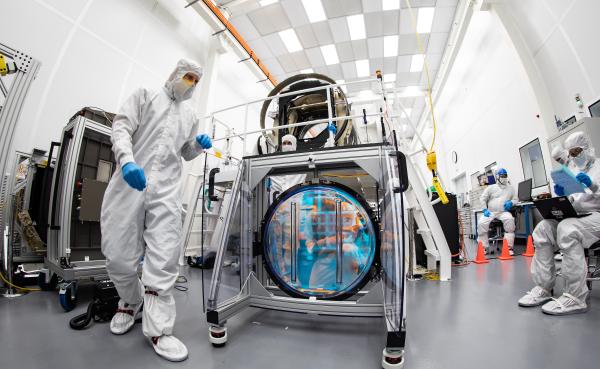In a landmark achievement, SLAC National Accelerator Laboratory announces the completion of the Legacy Survey of Space and Time (LSST) Camera. This monumental digital camera, boasting a staggering 3,200-megapixel capacity, is set to revolutionize our understanding of the universe.
A Game-Changer for Astronomy
The LSST Camera, a product of two decades of relentless scientific and engineering endeavor, stands as the cornerstone of the Vera C. Rubin Observatory. This observatory, funded by the Department of Energy (DOE) and the National Science Foundation (NSF), is poised to capture the southern night sky in unprecedented detail over the next decade.
Unraveling Cosmic Mysteries:
- LSST’s trove of data will aid in deciphering enigmas such as dark matter, dark energy, and the evolution of the universe.
- Its resolution is so extraordinary that it could detect a golf ball from 15 miles away, covering an area seven times wider than the full moon.
Unprecedented Technological Marvel
The LSST Camera represents a pinnacle of engineering prowess:
- Largest Ever Constructed: Weighing around 3,000 kilograms, with lenses surpassing five feet in diameter.
- Unrivaled Resolution: Its images boast such clarity that they can discern minute details, aiding in comprehensive cosmological studies.
Exploring Cosmic Frontiers
The LSST Camera’s primary objective lies in mapping and analyzing celestial objects to unlock profound insights into the cosmos. Notable endeavors include:
- Probing Dark Energy: By studying weak gravitational lensing, LSST aims to illuminate the nature of dark energy and its impact on the universe’s expansion.
- Shedding Light on Dark Matter: Identifying clusters of dark matter and observing galactic patterns will deepen our comprehension of this elusive substance.
Beyond the Stars
Apart from unraveling cosmic mysteries, the LSST Camera promises to:
- Enhance Galactic Understanding: Detailed mapping of the Milky Way will offer insights into its structure and evolutionary trajectory.
- Comprehensive Solar System Census: By cataloging celestial objects, LSST may reveal new insights into solar system formation and potential asteroid threats.
A Collaborative Triumph
The LSST Camera project stands as a testament to global collaboration and scientific ingenuity:
- Partner Contributions: Institutions like Brookhaven National Laboratory and Lawrence Livermore National Laboratory played pivotal roles in developing critical components.
- Collective Achievement: Scientists worldwide eagerly anticipate the groundbreaking discoveries facilitated by this extraordinary instrument.
Conclusion
With the LSST Camera poised for deployment atop the Simonyi Survey Telescope in Chile, the astronomical community braces for a new era of discovery. As SLAC’s Director John Sarrao aptly summarizes, the LSST Camera represents a gateway to unveiling the universe’s deepest secrets while igniting wonder for cosmic exploration.
Article & Image Source: Jacqueline Ramseyer Orrell / SLAC National Accelerator Laboratory









